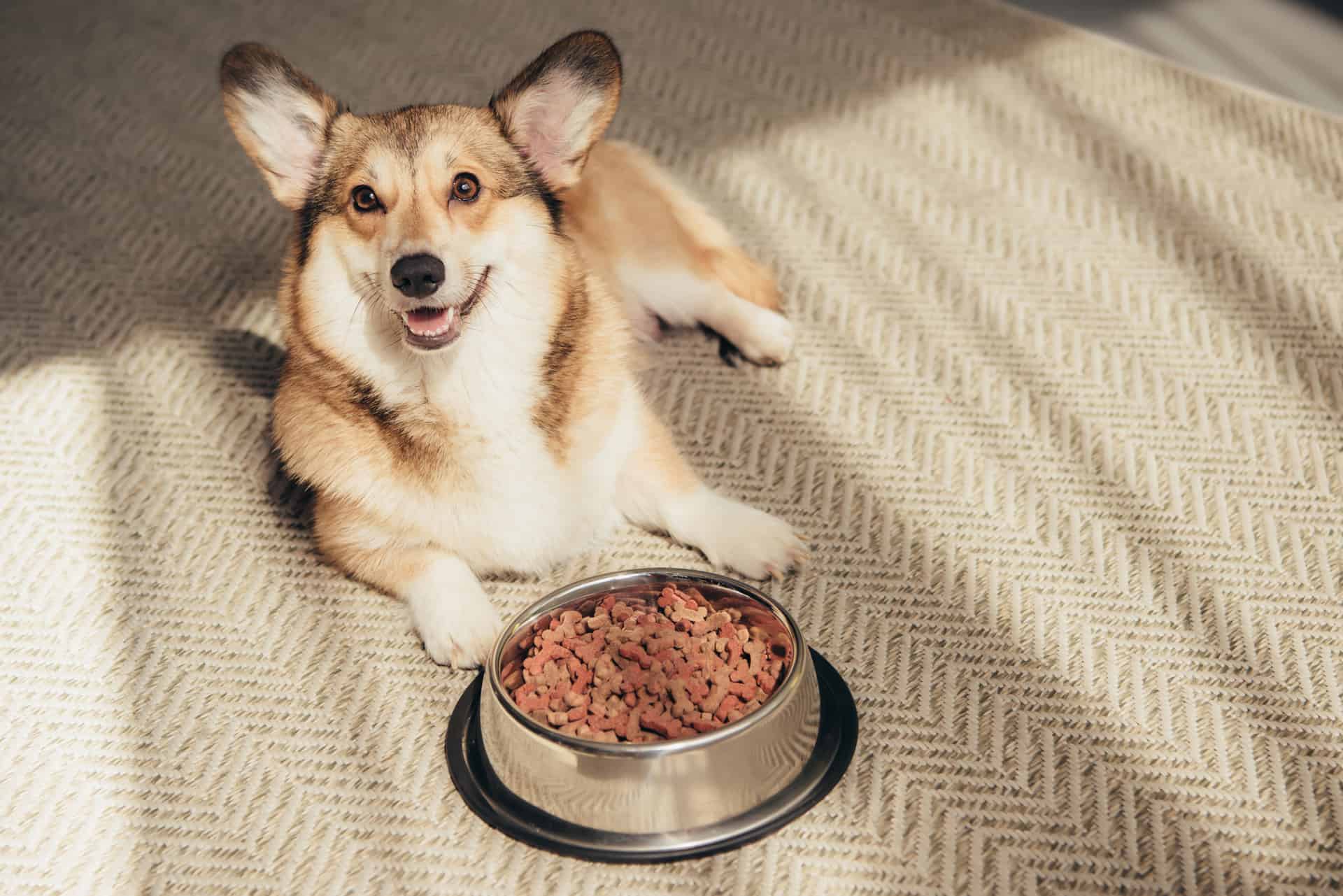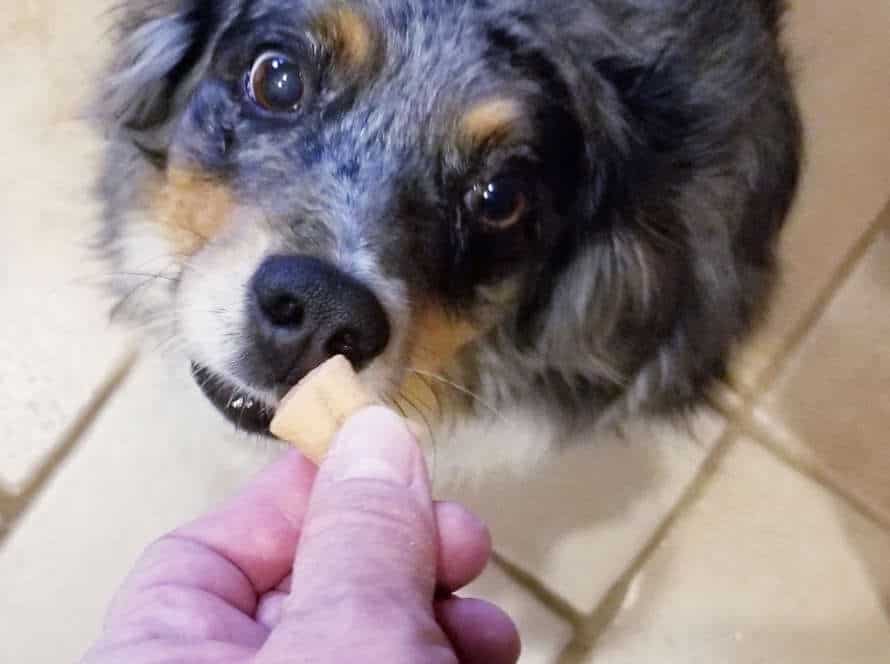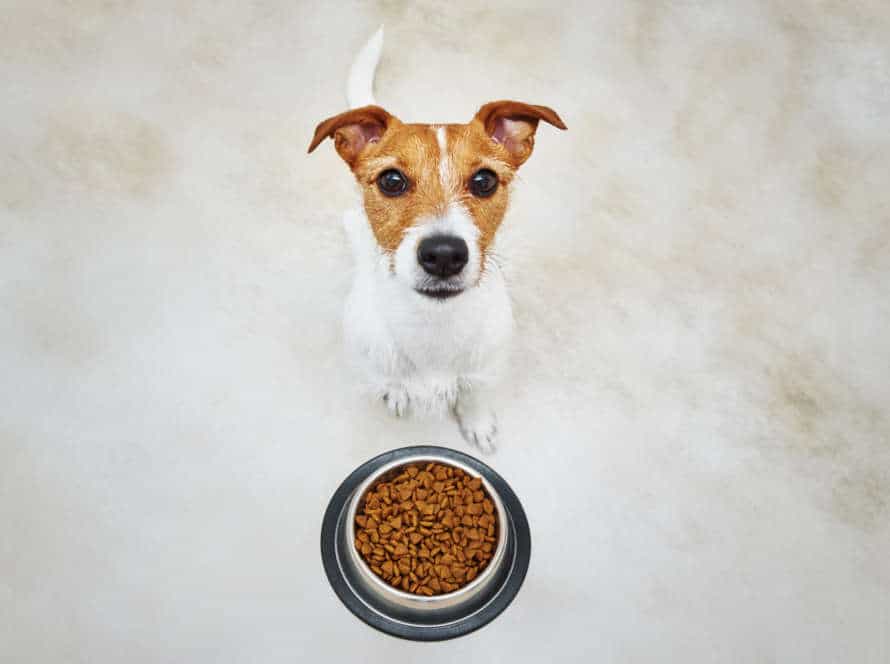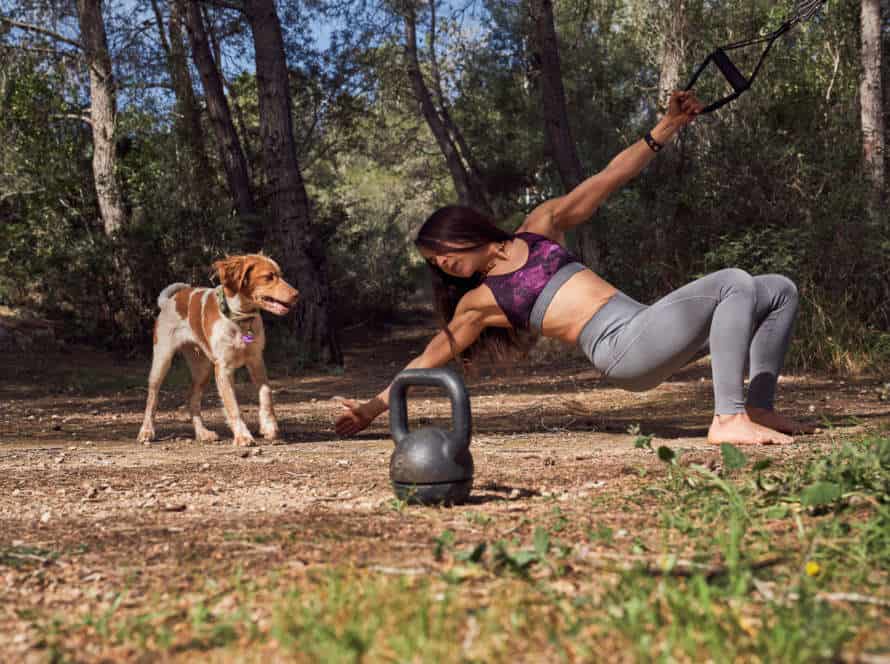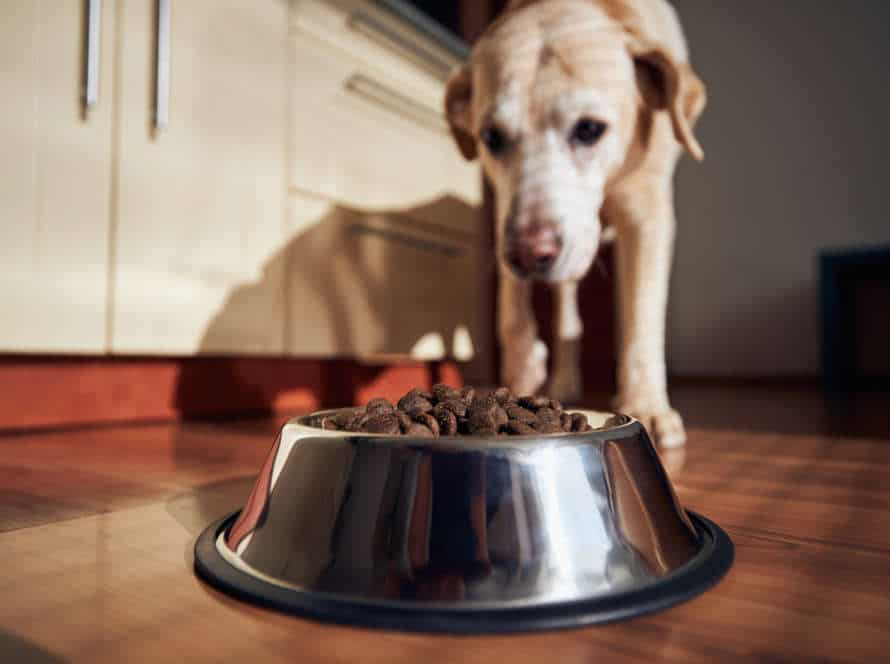Decoding Your Dog’s Nutritional Needs: A Guide for Dog Owners
As a dog owner, decoding your pet’s nutritional requirements can be hard. But it is really important to know their needs to keep them healthy! Here’s a guide to help you:
- Understand protein, carbs, fats and vitamins basics for dogs.
- Choose commercial dog food which meets the AAFCO standards.
- Check your dog’s age, breed, size and activity level.
- Read the label and understand what’s in the food.
- Do not give human food, processed food or toxic foods to dogs.
- If you have questions, ask your vet.
Pro Tip: Do research, read labels and ask your vet to make sure your dog’s nutritional needs are met.
Understanding Your Dog’s Nutritional Needs
As a pup parent, you must give your fur baby the correct nutrition. A nourishing diet is crucial for their well-being. Let’s explore the elements that influence their dietary requirements. Plus, here’s some advice to make sure your four-legged friend is getting all the nutrients they need.
Knowing the basics of a dog’s digestive system
It’s important to understand how a dog’s digestive system works. Here’s the scoop:
Mouth, esophagus, stomach, small intestine, large intestine, rectum, and anus – these are a dog’s digestive system parts.
Unlike us humans, dogs have a shorter digestive tract. This means they can digest foods higher in protein and fat better.
Dogs have powerful stomach acids that help break down food and destroy bacteria. This makes them less vulnerable to food poisoning than us.
A dog’s nutritional needs vary due to their age, breed, size and activity level. As a dog owner, you must give your pup a balanced, nutritious diet to meet their special needs. Good nutrition is key for keeping your dog healthy and happy for longer.
Factors that affect your dog’s nutritional needs
As a pup parent, it’s super important to know what can affect your pooch’s diet. Here are some points to think about:
- Age: Puppies have different eating needs compared to adult dogs. Older dogs may need special diets to keep them healthy.
- Activity level: If your dog is very active or works outside, they may need more calories and protein.
- Breed/Size: Different breeds and sizes need different diets. Big dogs may need diets to support their joints while small dogs may need higher fat content to stay warm.
- Health conditions: Dogs with specific problems like obesity or allergies may need special diets to help manage these issues.
Always talk to your vet to find the best diet and feeding plan for your doggo.
Importance of feeding your dog a balanced and complete diet
Feeding your pup a balanced and full diet is key to keeping their overall wellbeing. Dogs need certain nutrients, just like humans, or else their health can suffer.
Here are a few reasons why a balanced diet is important for your pup:
- Weight management: Feeding the correct diet in the right amounts can help stop obesity. This leads to health issues like heart disease and joint pain.
- Digestive Health: A balanced diet ensures good digestive health by giving the right amount of fiber. This keeps healthy bowel movements and stops constipation.
- Boosts Immunity: Nutrient-rich foods build a strong immune system, fighting infections and sickness.
- Increased Energy: Good nutrition leads to more energy, and better quality of life.
A balanced and full diet is necessary for your pet’s health. Consult with a vet to make sure your pup’s specific nutritional needs are met.
Ingredients to Look for and Avoid in Dog Food
Getting the correct doggo food is a big part of making sure your pup is content and healthy! Knowing which components to pick and which to pass up can assist you with making good choices when it comes to nourishing your four-legged companion. We’ll look at various ingredients to pick and dodge when picking out pup food in this guide.
Identifying high-quality protein sources for your dog
Identifying good protein sources for your pooch is key in keeping them healthy and happy. Here’s what to look for:
- Chicken – lean and easy to digest, with essential amino acids.
- Fish – like salmon, herring and sardines. Great for skin and coat, due to omega-3 fatty acids.
- Turkey – ideal for dogs with food sensitivities. Low fat and has essential amino acids.
Now, here’s what to dodge:
- Grains – wheat, corn and soy. Can cause allergies and weight gain.
- By-products – like chicken by-products. Low quality proteins, can cause digestive issues.
- Artificial Preservatives – BHA, BHT and ethoxyquin. Can be harmful to humans and dogs.
Understanding the role of carbohydrates in your dog’s diet
Carbs are a must for your pup’s diet. But, not all carbs are made equal. Sweet potatoes, brown rice, and oats are good sources of energy, and also provide essential vitamins and fiber. Avoid dog food with simple carbs like corn, wheat, and rice flour. These can cause blood sugar spikes, obesity, and offer little nutrition. As a responsible dog owner, read the ingredients list on labels to make sure your pup is living a healthy life.
Importance of essential vitamins and minerals in dog food
Vitamins and minerals are key to keeping your pup’s health and well-being in check. They aid in proper body functioning, protect against disease, and promote healthy skin and coat.
The following are some of the essential vitamins and minerals for your pup and their benefits:
- Vitamin A: Boosts vision, immunity, and skin health.
- Vitamin D: Supports bone growth, muscle function, and immunity.
- Vitamin E: Acts as an antioxidant and helps maintain the skin and coat.
- Zinc: Strengthens immunity and skin health.
- Iron: Carries oxygen throughout the body and keeps blood circulation healthy.
It is important to stay away from dog foods that contain artificial colors, flavors, preservatives, and fillers. Rather, opt for those containing high-quality animal proteins, whole grains, fruits, and veggies.
Common dog food ingredients that should be avoided
Avoid common dog food ingredients as they can be bad for your pup’s health. Watch out for artificial preservatives like BHA, BHT and ethoxyquin. They have been linked to cancer and other issues.
Meat by-products and fillers are low-quality and don’t offer enough nutrition. Plus, they can be hard to digest.
Wheat, soy and corn are allergens, so avoid them. They also don’t give much nutritional value.
Stay away from artificial flavors and colors too. These have no benefits and have been linked to hyperactivity, allergies and other health problems.
Choose dog food with high-quality proteins, whole grains, vegetables, and fruits. That way, your pup will get the nutrients they need to be healthy and happy.
Choosing the Best Food for Your Dog
Selecting the top grub for your pooch is critical! Ensure their good health and cheer. It is necessary to give your pup a balanced and nourishing diet to meet their dietary needs. This guide will explain what to look for in pup food and why a balanced diet is so essential.
Determining your dog’s dietary requirements based on their age, breed, and size
It’s vital to determine your pup’s diet based on age, breed, and size – to ensure they’re getting the right nutrition for their health. Here are some tips:
- Age: Puppies need high-protein and calorie food for growth. Adults need proteins, carbs, and healthy fats. Senior pooches need low-calorie, high-fiber food with antioxidants and joint-supporting ingredients.
- Breed: Different breeds have different dietary needs. Large breeds need low-protein and fat but higher fiber. Small breeds require higher-protein and fat to support their fast metabolism.
- Size: Size affects nutritional requirements. Large breeds need larger kibble to prevent choking/GI issues. Small breeds need smaller kibble for the same reasons.
For specific needs, consult your vet.
Choosing between dry, wet, or raw dog food
What to feed your pup can be a tough choice. To keep them healthy and happy, it’s important to learn about their dietary needs. We’ll look at the pros and cons of dry, wet, or raw food.
Dry dog food is one of the most popular and easy to find. It’s cost-effective, doesn’t go bad quickly, and cleans teeth and gums.
Wet food has higher moisture content and is easier to digest. This can be great for dogs with dental or tummy troubles. However, it’s more expensive, has a shorter shelf-life, and needs to be stored in the fridge.
Raw food is made with uncooked ingredients and provides a more natural diet. Though, it is costly, takes more time to prepare, and can cause health problems if not stored correctly.
Finally, it’s best to talk to your vet about what would work best for your pup.
Pro tip – combine wet and dry food for a balanced diet.
How to read and understand dog food labels
Reading dog food labels can be daunting for dog owners. But, understanding these labels is key to make sure your pup gets the nourishment it needs. Here are some tips to make it easier:
- Figure out the first three ingredients listed. They are the main ingredients in the food.
- Check the protein content. It’s important for your pet’s growth and development.
- Look for the statement “complete and balanced”. That means the food meets the nutritional requirements set by AAFCO.
- Steer clear of fillers, synthetic preservatives and by-products.
- Take into account your dog’s breed, age and health needs when selecting food.
By following these tips, you can make a wise decision when buying dog food and ensure your dog is getting a healthy, nutritious diet.
Maintaining Your Dog’s Nutritional Health
Ensuring your pup’s nutrition is vital for their health and joy. A balanced diet is the key for optimal health and energy. So, it’s necessary to understand what your dog needs. This guide will help you with decoding your pup’s nutritional needs. Plus, how to make sure they get the right nutrients and how to supply a balanced diet to your pet.
Monitoring your dog’s weight and overall health
To keep your pup healthy and happy, it’s important to check their weight and overall health. Here’s how:
- Track their weight and body condition score to ensure they stay within a healthy range.
- Talk to your vet about the correct portion size and feeding schedule for your dog’s breed, age, and activity level.
- Feed them high-quality dog food without added fillers or artificial additives.
- Keep fresh water available at all times to avoid dehydration.
- Include healthy treats and snacks in their diet for dental health and extra nutrients.
- Exercise your dog for physical and mental health.
- Watch out for any changes in their urine or stool, which could be signs of digestive or urinary problems.
Follow these tips and make sure to get regular vet checkups to keep your dog’s health and nutrition in check – they’ll thank you for it!
Identifying and managing food allergies or sensitivities
Identifying and managing food allergies/sensitivities in dogs is essential for their nutritional health and overall wellbeing. Common signs of food allergies/sensitivities include:
- Itchiness, redness, rashes on skin
- Upset stomach/vomiting
- Diarrhea
- Chronic ear infections
If you suspect your dog has a food allergy/sensitivity, take them to a vet for diagnosis. Then, adjust their diet. Many hypoallergenic dog foods are free of common allergens like grains, dairy, soy. Try a limited-ingredient diet to identify specific triggers. Read food labels carefully. Avoid table scraps/human food, as these can trigger allergies/sensitivities.
Importance of regular vet check-ups
It’s essential to get your pooch checked at the vet regularly. This gives your vet the chance to spot any health issues before they become serious. During the check-up, your vet will:
- Do a full physical exam to evaluate your dog’s health and detect any unusual signs.
- Provide your pup with the right vaccinations.
- Test for heartworms, tick-borne diseases, and other parasites.
- Screen for hidden illnesses, such as diabetes, kidney disease, or liver problems.
- Explain how to provide proper nutrition and exercise.
It’s important to arrange regular vet check-ups at least once a year, even if your dog looks like they’re doing well. This will make sure your pup is given the best care and leads a happy, healthy life.
Homemade Dog Food
Are you searching for a way to give your pup a tailored diet? Homemade dog food is the solution! It has become quite popular with dog owners. Plus, it’s simpler than you’d expect to guarantee your pooch gets the nutrition they need. Let’s explore the benefits of homemade dog food and how you can make sure your pup gets the right nutrients.
The pros and cons of homemade dog food
Homemade dog food is a popular choice for owners who want to give their furry friends a healthy and nutritious diet. But, there are some pros and cons to making your pup’s food at home.
Pros:
- Control over ingredients: You can pick the ingredients in your dog’s meal, ensuring quality and freshness.
- Awareness of nutrition: Making your own food lets you be aware of the nutritional content and make sure your pet is getting their necessary vitamins and minerals.
- Freedom from allergies: Homemade food can be great for dogs with food sensitivities or allergies, since you can choose ingredients that fit their needs.
Cons:
- Time-consuming: Preparing the food can take time, with careful planning, shopping, and food prep.
- Risk of unbalanced diet: Without knowledge about a dog’s nutrition, homemade food can be unbalanced, leading to health issues.
- Expense: Cost-wise, it can be more expensive than buying commercial food.
In the end, homemade food can be a good option for owners who want to put in the effort, understand the dog’s needs, and afford it. However, it’s important to make sure the food is balanced and suitable for their pet.
Tips for making a balanced homemade dog food
Creating balanced homemade dog food? Must-know tips:
- Give a high-quality protein source e.g. chicken, beef, lamb or fish.
- Veggies for vitamins, minerals + fiber e.g. carrots, green beans, sweet potatoes.
- Whole grains for fiber and carbs e.g. brown rice, quinoa.
- Calcium source for bone health e.g. eggshells, calcium carbonate.
- Healthy fats for a shiny coat + skin, e.g. fish oil, flaxseed oil.
Remember: proportions depend on your dog’s size, age, activity. Vet/canine nutritionist can help with specific needs.
Dog food recipes that you can make at home.
Want to make sure your pup gets the right nutrients? Try making homemade dog food! Here are three recipes that you and your furry friend can enjoy:
- Chicken & Rice: Cook chicken breasts & boil rice. Mix ’em together & serve cooled.
- Beef Stew: Throw cubes of beef, sweet potato, green beans & water in a crockpot. Let cook for 6-8 hours. Serve cooled.
- Vegetarian Chili: Cook beans (kidney, black, pinto), tomato sauce, carrots, peas & sweet potato in a pot. Add garlic & salt to taste. Serve cooled.
These recipes not only give your pup the nutrition they need, but also make mealtime a special bonding experience. Pro Tip: Check with your vet before introducing new foods.
Frequently Asked Questions
1. How do I determine what type of food I should feed my dog?
There are several factors to consider when determining your dog’s nutritional needs, including their age, weight, activity level, and any health issues they may have. It’s best to consult with a veterinarian to develop a personalized feeding plan for your dog.
2. Are there specific ingredients I should look for or avoid in my dog’s food?
Every dog is different, and some may have allergies or sensitivities to certain ingredients. Generally, it’s best to look for high-quality protein sources, such as chicken or lamb, and avoid fillers like corn or wheat. Again, consulting with a veterinarian can help you determine what’s best for your individual dog.
3. How often should I feed my dog?
The frequency of feeding depends on your dog’s age and activity level. Puppies require more frequent feedings, while adult dogs may only need two meals per day. It’s best to establish a feeding schedule and stick to it to help maintain your dog’s digestive health.
4. Can I give my dog human food as a treat?
Some human foods can be harmful to dogs, so it’s important to do your research before sharing any table scraps. Foods like chocolate, grapes, and onions can be toxic to dogs. In general, it’s best to stick to dog-specific treats or fruits and veggies that are safe for dogs, like carrots or apples.
5. Do dogs need supplements in their diet?
Most dogs can get all the necessary nutrients they need from their food, but in some cases, supplements may be recommended by a veterinarian. This is more common in older dogs or dogs with certain health conditions. Always consult with a veterinarian before adding any supplements to your dog’s diet.
6. Can I switch my dog’s food, and if so, how should I do it?
It’s possible to switch your dog’s food, but it’s important to do so gradually to avoid any digestive issues. Start by mixing some of the new food in with the old food, gradually increasing the amount of new food over several days. If your dog experiences any vomiting or diarrhea during the transition, consult with a veterinarian.

